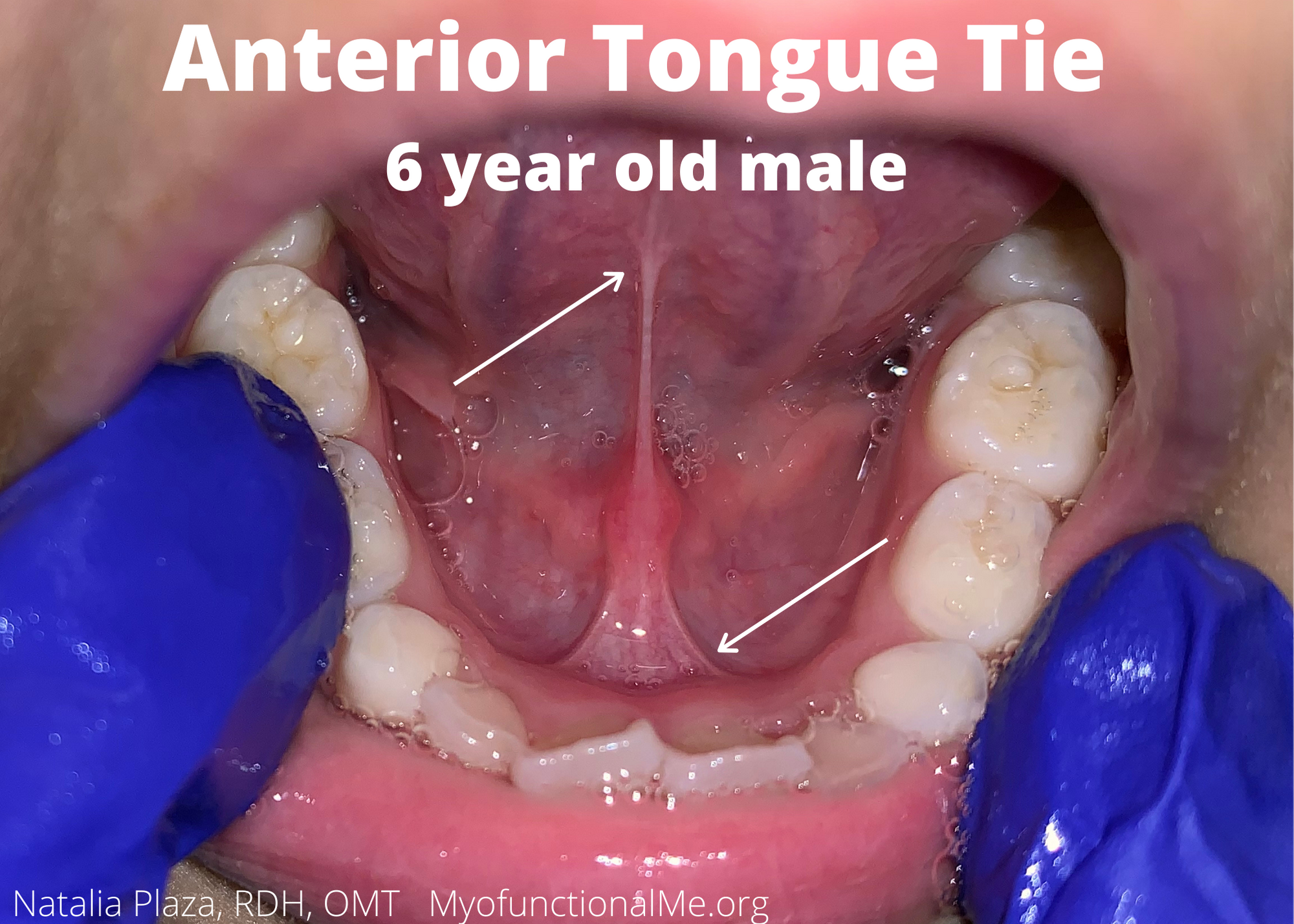Tethered Oral Tissue (TOT)
It is also referred to as Ankyloglossia. The concern that it only effects speech is antiquated. Tongue tie is a congenital orofacial myofunctional disorder. Research shows us that tongue tie, or a tethered oral tissue, is a condition where by the fascia (connective tissue) under the tongue is too short, thick, deep or dense, not allowing the tongue to have full contact with the hard palate nor allowing it correct activation, elevation, tonicity or coordination, i.e. full function. It’s the Pandora’s box of orofacial myofunctional disorders. The tongue is a foundational dynamic system of muscles that helps to shape our very head and airway, and when left tethered can frequently lead to a myriad of dysfunctions. As the body is an integrated system, we cannot consider nor treat it in isolation. A patient can have an anterior tongue tie, a mid tongue tie or both. A tethered oral tissue left untreated can have severe lifelong damaging and compiling impacts on a person’s health and development. If not released, compensatory behaviors almost invariably develop compiling orofacial myofunctional disorders. It’s best to schedule a frenum release at the individual’s optimal timing, and as early in age as possible, supported with myofunctional therapy pre-op & post-op.
Courtesy of Zaghi MD. https://www.zaghimd.com/tongue-tie
This patient exhibits Dr. Kotlow’s classic moderate class II tongue tie whereby the tissue is pulling on the inner alveolar ridge creating an “Eiffel Tower” shape. If left untreated, later in life this most likely would lead to a mucogingival defect causing gingival recession. This patient cannot achieve lingual palatal suction.
He has a high vaulted deformed hard palate from lack of life long tongue/palate interface. (same patient from right, 6 year old male)
This patient exhibits Dr. Zaghi’s TRMR-TIP Grade 3 moderate restriction tongue tie whereby the tissue is preventing the tongue from reaching the hard palate. The frenum is thick, short, deep and dense. It frequently leads to a dysfunctional swallow, skeletal malocclusions, a compromised airway space, nightly bruxism and much more.
She also exhibits Dr. Zaghi’s TRMR-LPS Grade 3 moderate restriction in posterior tongue mobility whereby the tissue is preventing the tongue from reaching a healthy tall palate suction. The frenum runs deep under the mid tongue. Her midline is off. This is also referred to a “posterior” tongue tie.
The following is a list of comorbidities associated with not releasing a tongue tie nor implementing orofacial myofunctional therapy
-Weak airway muscles
-Sleep breathing disorders
-Painful breast feeding
-Colic babies
-Trouble latching in infants
-Dysfunctional swallowing
-Cavities
-Overactive lacrimal glands
-Drooling
-Mouth breathing
-Forward head posture
-Narrow dental arches
-Asthma
-Anxiety
-Depression
-ADHD
-Insomnia
-Problems with sexual intimacy
-Noxious oral habits
-Crooked teeth
-“Failure to thrive” in children
-Strain when yawning or sneezing
-Bruxism
-Speech misarticulations
-Nonnutritive sucking habits
-Digestive problems
-Ear infections
-Poor drainage of cerebral spinal fluid
-Postural pain
Here’s a video of an anterior lingual frenectomy.
No blood. No heat. No blade. Quick & easy.
Lingual Frenectomy done by Dr. Lawrence Kotlow.
The best solution is to get a referral to your oral surgeon for a frenectomy during your myofunctional therapy to ensure the lingual frenum does not reattach and to achieve maximum tonicity, range of motion and function after the surgery (you wouldn’t get knee surgery and not do to PT, right? Same thing here). The surgery is frequently done on new borns now a days, so you’ll be just fine!
“Adults: snoring, obstructive sleep apnea, neck tension, TMJ pain and disfunction, and headaches…”
— Scott A. Siegel, MD, DDS, FACS, FICS, FAAP on tongue ties





